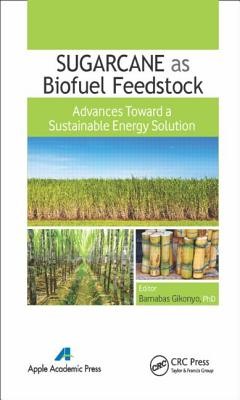
- We will send in 10–14 business days.
- Publisher: Apple Academic Press
- ISBN-10: 1771881291
- ISBN-13: 9781771881296
- Format: 15.8 x 23.4 x 1.8 cm, kieti viršeliai
- Language: English
- SAVE -10% with code: EXTRA
Sugarcane as Biofuel Feedstock (e-book) (used book) | bookbook.eu
Reviews
Description
This title includes a number of Open Access chapters.
As the world's energy hunger grows ever larger, fossil fuel reserves are diminishing--and concerns about climate change remind us that our love affair with fossil fuels cannot continue much longer. This has inspired intense research into sustainable energy sources. Biofuels seemed initially promising, but the world soon realized that food-based biofuel has its own dangers. Second-generation biofuels, however, use biomass from crops' inedible parts--such as the stalks and leaves of sugarcane--offering a far more practical, sustainable, and commercially viable solution.
In this book, researchers from around the world review some of the most important and timely topics related to using sugarcane feedstock for biofuel. After a basic overview, topics such as these are included:
- Pretreatment methods
- The use of various microbial technologies, including bacteria and yeast, to enhance biofuel production
- Environmental impacts
- Economic feasibility
- The viability of electricity being produced side by side with biofuel
Essential reading for graduate students and research scientists investigating second-generation biofuels, this book is also recommended for environmentalists, environmental engineers, and microbiologists.
EXTRA 10 % discount with code: EXTRA
The promotion ends in 21d.17:03:50
The discount code is valid when purchasing from 10 €. Discounts do not stack.
- Publisher: Apple Academic Press
- ISBN-10: 1771881291
- ISBN-13: 9781771881296
- Format: 15.8 x 23.4 x 1.8 cm, kieti viršeliai
- Language: English English
This title includes a number of Open Access chapters.
As the world's energy hunger grows ever larger, fossil fuel reserves are diminishing--and concerns about climate change remind us that our love affair with fossil fuels cannot continue much longer. This has inspired intense research into sustainable energy sources. Biofuels seemed initially promising, but the world soon realized that food-based biofuel has its own dangers. Second-generation biofuels, however, use biomass from crops' inedible parts--such as the stalks and leaves of sugarcane--offering a far more practical, sustainable, and commercially viable solution.
In this book, researchers from around the world review some of the most important and timely topics related to using sugarcane feedstock for biofuel. After a basic overview, topics such as these are included:
- Pretreatment methods
- The use of various microbial technologies, including bacteria and yeast, to enhance biofuel production
- Environmental impacts
- Economic feasibility
- The viability of electricity being produced side by side with biofuel
Essential reading for graduate students and research scientists investigating second-generation biofuels, this book is also recommended for environmentalists, environmental engineers, and microbiologists.


Reviews